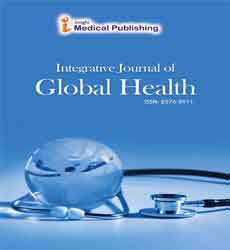ISSN : 2576-3911
Integrative Journal of Global Health
Blood donation and sero-positive of syphilis at North Darfur State- Sudan 2018
Nassreldeen Khalid Abdelrahman*
Nile Valley University. Atbara, Sudan
Received Date: 2022-07-05 | Accepted Date: 2022-07-11 | Published Date: 2022-07-27
Abstract
Objective: To determine the prevalence of syphilis sero-positivity among blood donors, as well as the interaction between syphilis and age as well as demographic details. Methods: In North Darfur State, Western Sudan, a retrospective analysis of consecutive blood donation records from January to December 2018 was implemented. The quantitative descriptive is computed using percentages. Chi-square was used to analyze trends, and the p-value was used to determine the statistical significance of the parameter. Results: There were 4969 men between the ages of 15 to 55 who were eligible to donate blood, were screened for syphilis, 646 (13.0% ) had biomarker evidence of syphilis, while the rest (87%) were negative. A strong association has been reported between residential and biomarker evidence of syphilis infection in the study (P = 0.001). The occurrence of transfusion-transmissible infections was disproportionate to age (P = 0.63).As compared to the other age groups, the (15-25) and (26-35) year age groups has a higher prevalence: 243 (4.8%) and 276 (5.5%) were positive, accordingly. Conclusion: There seems to be an increasing proportion of sero-positive VDRL in blood donations in North Darfur State. An association between syphilis infection and residency was realized, as well as a high prevalence within a particular age demographic without a statistically meaningful correlation.
Open Access Journals
- Aquaculture & Veterinary Science
- Chemistry & Chemical Sciences
- Clinical Sciences
- Engineering
- General Science
- Genetics & Molecular Biology
- Health Care & Nursing
- Immunology & Microbiology
- Materials Science
- Mathematics & Physics
- Medical Sciences
- Neurology & Psychiatry
- Oncology & Cancer Science
- Pharmaceutical Sciences
